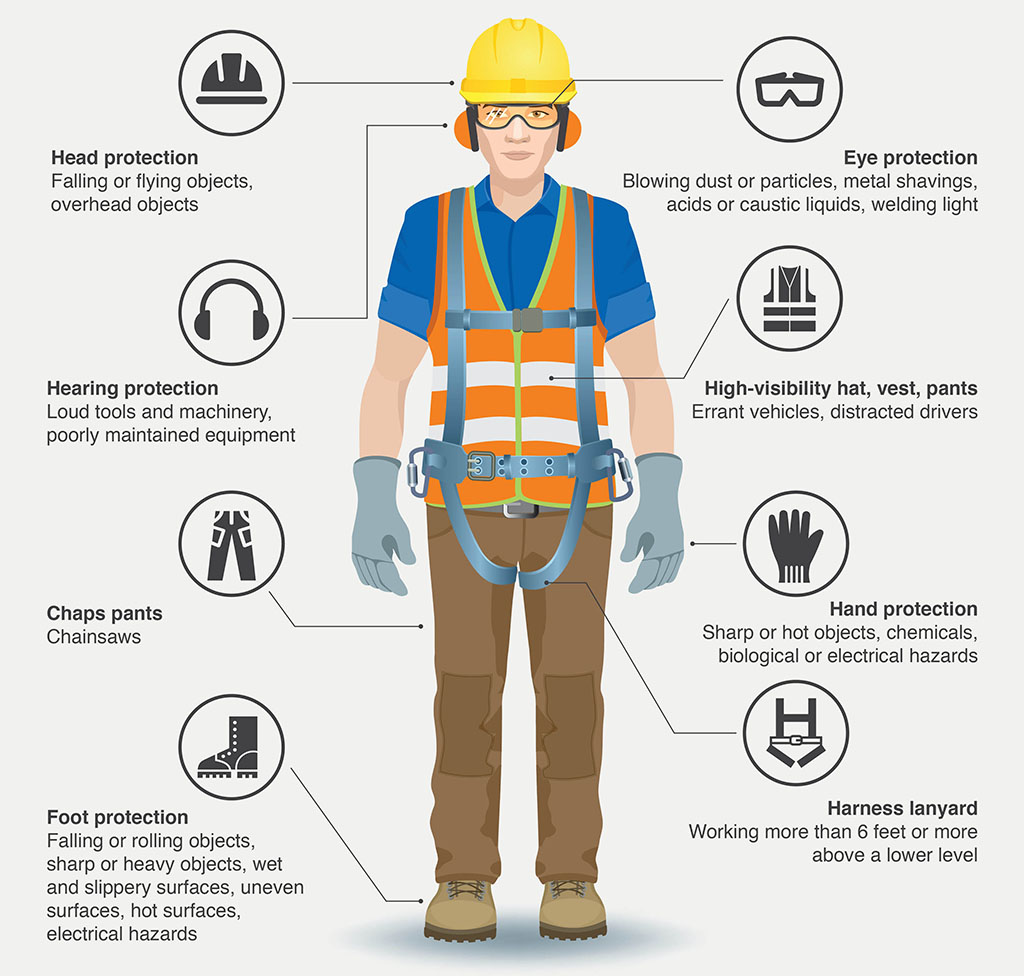What are personal protective equipment in work in Vietnam? In which work environment are employees in Vietnam provided with personal protective equipment?
What are personal protective equipment in work in Vietnam? In which work environment are employees in Vietnam provided with personal protective equipment? Thank you! - Mr. Long (Dong Nai)
What are personal protective equipment in work in Vietnam?
Pursuant to Article 3 of the Circular 25/2022/TT-BLDTBXH stipulating personal protective equipment (PPE):
Personal protective equipment (PPE)
1. PPE refers to necessary equipment which employees must be provided with during the performance of their work and tasks in order to protect their body from dangerous, hazardous factors during work which have not been fully eliminated by technology solutions, occupational safety and hygiene techniques, equipment at workplace.
2. PPE includes:
a) Head protection.
b) Eye and face protection.
c) Hearing protection.
d) Respirators.
dd) Arm protection.
e) Leg protection.
g) Body protection.
h) Protection against falling.
i) Protection against electricity, electromagnetic field, radiation.
k) Protection against drowning.
l) Other occupational safety and hygiene equipment.
3. PPE provided for employees must be able to effectively eliminate dangerous and hazardous factors present in work environments, be easy to use, preserve, and not cause any other harmful effect.
4. PPE must meet standards prescribed in technical regulations, national technical regulations, other labor laws, and specialized laws (if any).
As regulated above, PPE refers to necessary equipment which employees must be provided with during the performance of their work and tasks, including following equipment:
- Head protection.
- Eye and face protection.
- Hearing protection.
- Respirators.
- Arm protection.
- Leg protection.
- Body protection.
- Protection against falling.
- Protection against electricity, electromagnetic field, radiation.
- Protection against drowning.
- Other occupational safety and hygiene equipment.
What are personal protective equipment in work in Vietnam? In which work environment are employees in Vietnam provided with personal protective equipment? - image from internet
What are rules for preserving PPE in Vietnam?
Pursuant to Article 7 of the Circular 25/2022/TT-BLDTBXH stipulating rules for preserving PPE in Vietnam:
- Employers are responsible for designing locations for storing and preserving PPE in accordance with manufacturers' instructions. Employers are responsible for preserving provided PPE.
- In regard to PPE for use in places with inadequate hygiene conditions or vulnerable to toxic, infection, or radiation, employees must clean, disinfect, sterilize, or perform radioactive decontamination after each use in order to maintain occupational safety and hygiene for other employees and surrounding environment and carry out periodic inspection.
In which work environment are employees in Vietnam provided with personal protective equipment?
Pursuant to Article 4 of the Circular 25/2022/TT-BLDTBXH stipulating eligibility for PPE in Vietnam:
Eligibility for PPE
Employees working in environments where they are exposed to dangerous and hazardous factors below shall be provided with PPE:
1. Exposure to physical factors that do not meet hygiene standards.
2. Exposure to toxic dust and chemicals.
3. Exposure to toxic biological factors:
a) Toxic and infectious viruses, bacteria, harmful insects;
b) Faeces, wastewater, garbage, sewers;
c) Other toxic biological factors.
4. When working with equipment, tools, machinery with risks to occupational safety, hygiene; working in a position prone to occupational accidents; working at heights; working in underground structures or places with poor air supply; working in mountains, caves, or other dangerous and hazardous working conditions.
As regulated above, employees working in environments where they are exposed to dangerous and hazardous factors below shall be provided with PPE:
- Exposure to physical factors that do not meet hygiene standards.
- Exposure to toxic dust and chemicals.
- Exposure to toxic biological factors:
+ Toxic and infectious viruses, bacteria, harmful insects;
+ Faeces, wastewater, garbage, sewers;
+ Other toxic biological factors.
- When working with equipment, tools, machinery with risks to occupational safety, hygiene; working in a position prone to occupational accidents; working at heights;
- Working in underground structures or places with poor air supply;
- Working in mountains, caves, or other dangerous and hazardous working conditions.
Best regards!











